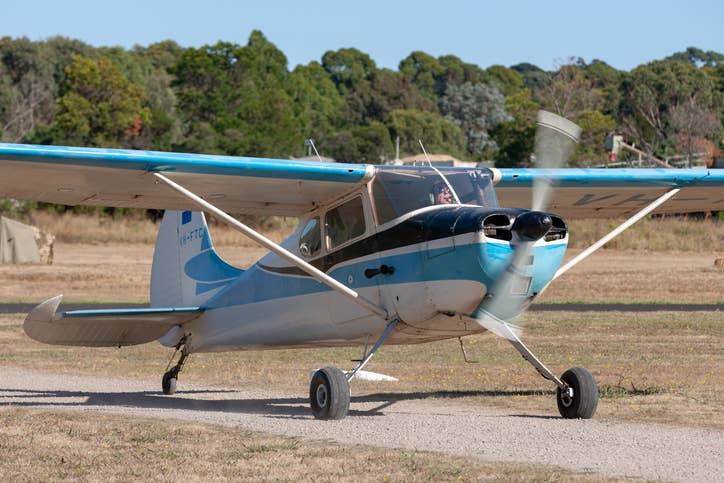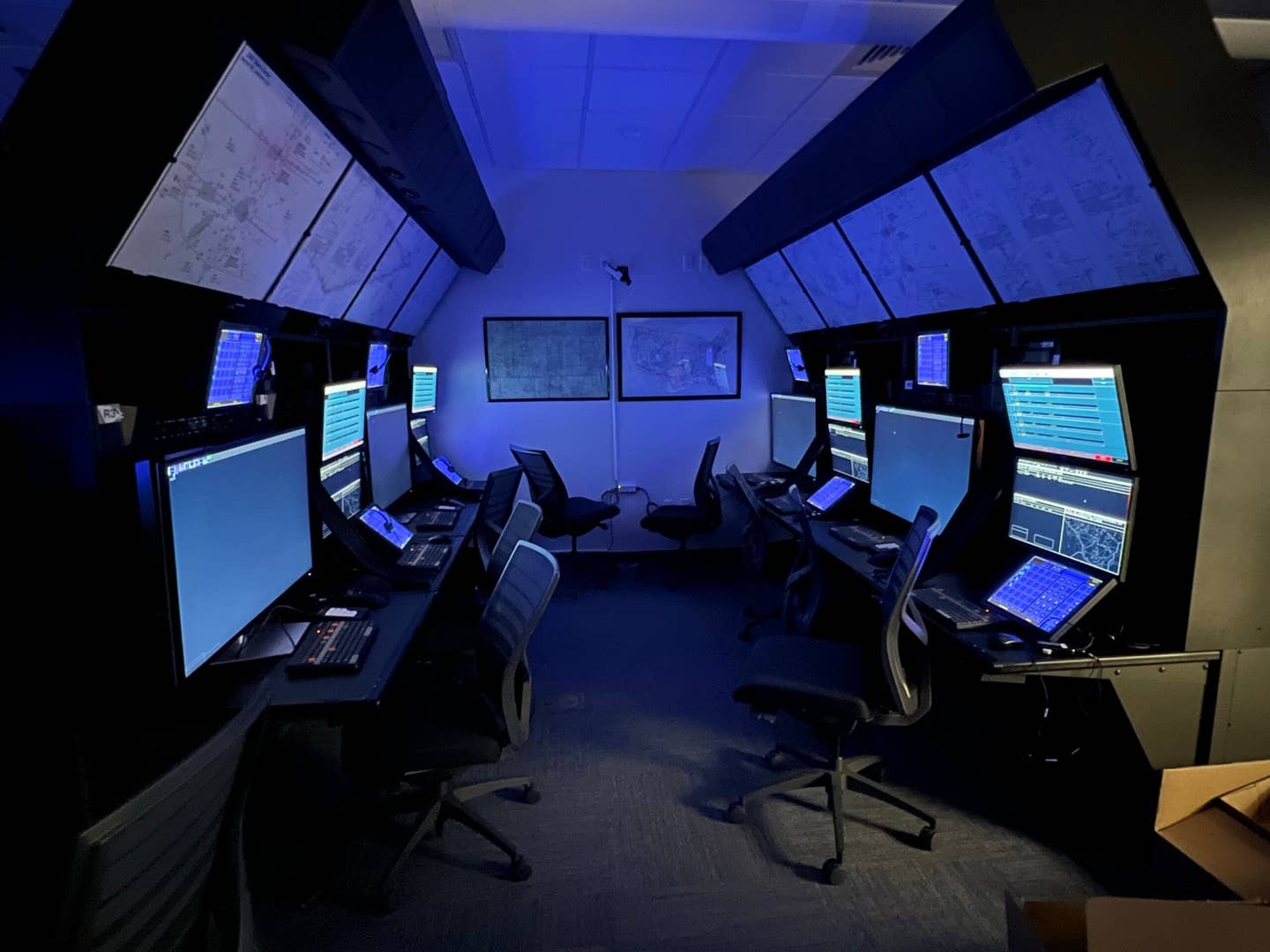
In a wheel landing, the goal is to touch the front wheels down first, stay level and slowly decelerate. [Credit: Ryan Fletcher]
There’s something classic and exciting about flying a tailwheel using stick-and-rudder skills. In fact, some of these airplanes date back as far as World War I or II.
While earning your tailwheel endorsement, you’ll build a new skill set and broaden your ability to fly different kinds of aircraft. You’ll also broaden your horizons. You can fly to backcountry landing strips using these useful and capable aircraft.
It’s important to review what’s involved in the process of earning a tailwheel endorsement. Keep reading to learn what you can expect from the training process.
What Is a Tailwheel Endorsement?
Also known as a tailwheel endorsement, a tailwheel endorsement is a required form of training that allows you to fly these types of aircraft. You’ll learn all about proper maneuvers and flying procedures specific to aircraft for which you truly need sharp stick-and-rudder skills.
Once you have this endorsement, you can fly aircraft such as a Piper J-3 Cub, Piper PA-18 Super Cub, Luscombe 8 series, Cessna 120, 140, or 170, Aeronca Champs, and many others. You’ll find many unique tailwheel aircraft that will be delightful to fly.
Wind can be a huge factor in flying these airplanes. Earning your endorsement can help prepare you for handling a conventional-gear airplane and master three-point or wheel landings.
One reason why pilots enjoy tailwheel aircraft is that some are great for aerobatics. You can get pretty fancy with your flying in this airplane and have a great time.
How Does a Tailwheel Endorsement Work?
The FAA has no requirement for a specific number of flight hours it takes to earn this endorsement because it is proficiency based. However, on average, it takes most pilots anywhere from 8 to 10 hours to complete an initial transition to tailwheel aircraft overall, and 5 to 10 hours to become proficient in a specific type.
Plus, you’ll need to successfully perform several maneuvers to meet the requirements outlined in Part 61 of the FAA regulations. The course consists of taxiing, normal and crosswind takeoffs and landings, wheel landings, go-around procedures, and additional skills to further your proficiency and prepare you for piloting this type of aircraft.
To get started, your certified instructor will have you perform some maneuvers on the ground to become familiar with how the airplane’s flight controls handle. Then, the instructor will generally take you to the flight school’s practice area to introduce standard proficiency maneuvers (such as slow flight and stalls) and give you a chance to get acquainted with the aircraft. Then, you’ll begin practicing takeoffs and landings both on the grass (if available) and on the pavement.
Once an instructor reviews your proficiency and determines you are ready for solo flights in a tailwheel aircraft, you’ll earn the endorsement in your logbook and have the opportunity to rent and fly—or even own—this type of aircraft.
Six Steps for How To Get a Tailwheel Endorsement
The tailwheel endorsement can be pretty fun to earn since it focuses on in-flight training and maneuvers. You’ll get to pilot the aircraft with your instructor as you master the required maneuvers and gain proficiency. Here are six steps involved in earning this endorsement.
Step 1: Taxiing and Ground Maneuvers
The best course of tailwheel instruction begins on the ground, where your instructor will use basic taxiing procedures to introduce you to how the aircraft handles and how the flight controls feel on the ground. If you can master taxiing—especially in a wind—you will have much greater success at performing safe takeoffs and landing in the tailwheel.
Step 2: Normal and Crosswind Takeoffs and Landings
Wind is always a factor when piloting an aircraft but in a tailwheel airplane, you’ll face even greater challenges from gusty weather. You’ll start by mastering takeoffs and landings during calm wind conditions. This will prepare you for understanding how the airplane reacts and what you can expect from it.
Then, you’ll try the experience again but, this time, dealing with crosswinds and stronger headwinds. During these landings, you will be using a certain amount of control authority to counteract the crosswind and keep the airplane aligned with the runway—and sometimes the crosswind is too strong for you to have enough control authority to do this.
Crosswind takeoffs and landings are some of the conditions that make piloting these aircraft more challenging.
Step 3: Wheel Landings
When performing a normal, three-point landing in a tailwheel, the goal is to land with all three wheels touching down at the same time. But during high winds or gusty weather, you may want to aim to land on your main two wheels first to provide more control over touchdown.
Your instructor will likely start by teaching you the three-wheels down method, depending on the airplane. Once you’ve mastered that, you’ll move onto wheel landings, which are more challenging. However, pilots prefer to land some aircraft, such as the Globe Swift and the Douglas DC-3, using a wheel landing for better control authority regardless of the wind conditions.
In a wheel landing, you’ll keep the aircraft level, which means your tailwheel will be elevated higher than your front wheels, with the fuselage typically parallel to the runway surface. The goal is to touch the front wheels down first while you slowly decelerate. It can be challenging though, because the airplane can bounce back into the air if you don’t decelerate properly before your tailwheel reaches the ground.
Step 4: Go-Around Procedures
Your landing preparation might look like it is going well until you get close to the runway. If you decide something’s not right for landing—such as airspeed or descent rate that’s too high, or another airplane entering the runway—you’ll initiate a go-around procedure to approach the runway again for a more stabilized approach or to let other traffic depart or clear the runway.
During a go-around, the pilot decides that the landing is not going according to plan and discontinues approaching the runway. At this point, you’ll normally climb back up to pattern altitude while you stay in the traffic pattern to attempt another landing approach.
One common reason for a go-around is flying or rolling too far down the runway to safely stop. But aborting a landing and resuming flying the aircraft takes skill, which is why your instructor will work with you to gain confidence performing go-arounds during your tailwheel endorsement training.
Step 5: Other Skills
In addition to the four main training areas, your instructor might include other skills as part of your tailwheel endorsement training. Here’s a look at other possible skills you might learn.
- Steep turns
- Short-field takeoffs
- Grass or other soft-field takeoffs and landings
- Forward slips
- Stalls
- Emergency maneuvers
- Bounce recoveries
Step 6: Logbook Endorsement
Upon completing the required training for the tailwheel endorsement, your instructor will check your proficiency in all areas to determine whether you’re ready to receive the endorsement. Once satisfied, your instructor will add the endorsement to your logbook.
Advance Your Pilot Skills
The tailwheel endorsement will allow you to fly a new type of aircraft. But it will also help you advance your pilot skills as you learn new maneuvers. Find a flight school near you that prepares pilots to operate tailwheel aircraft. For more aviation industry news, subscribe to FLYING Magazine.
FAQ
How hard is it to fly a tailwheel?
A tailwheel aircraft is not harder to fly than other aircraft, but outside elements like wind can present more challenges than they would in other aircraft, which is why these aircraft require special training.
Can I learn to fly in a tailwheel?
As long as you have a student permit, you can earn your flight hours in a tailwheel with your instructor’s permission. That way, once you earn your private pilot certificate, you will also have earned a tailwheel endorsement.
How much does it cost to get a tailwheel endorsement?
You should budget about $2,000 to earn your tailwheel endorsement, though prices will depend on the rental price of the aircraft and the price your instructor charges. Renting a tailwheel aircraft generally costs about $130 to $160 per hour. For 10 hours of training, that’s about $1,500. Instructors earn on average $50 to $75 an hour, which will increase your costs by an additional $500 to $750.

Sign-up for newsletters & special offers!
Get the latest FLYING stories & special offers delivered directly to your inbox






